- Home
- Isaac Asimov
Gold: The Final Science Fiction Collection Page 17
Gold: The Final Science Fiction Collection Read online
Page 17
It was a dead-end sort of thing, of course, but it kept alive the thought of mechanical devices that might do more than clockwork tricks, that might be more nearly alive.
What’s more, science was advancing rapidly, and in 1798, the Italian anatomist, Luigi Galvani, found that under the influence of an electric spark, dead muscles could be made to twitch and contract as though they were alive. Was it possible that electricity was the secret of life?
The thought naturally arose that artificial life could be brought into being by strictly scientific principles rather than by reliance on gods or demons. This thought led to a book that some people consider the first piece of modern science fiction -Frankenstein by Mary Shelley, published in 1818.
In this book, Victor Frankenstein, an anatomist, collects fragments of freshly dead bodies and, by the use of new scientific discoveries (not specified in the book), brings the whole to life, creating something that is referred to only as the “ Monster” in the book. (In the movie, the life principle was electricity.)
However, the switch from the supernatural to science did not eliminate the fear of the danger inherent in knowledge. In the medieval legend of Rabbi Loew’s golem, that monster went out of control and the rabbi had to withdraw the divine name and destroy him. In the modern tale of Frankenstein, the hero was not so lucky. He abandoned the Monster in fear, and the Monster-with an anger that the book all but justifies-in revenge killed those Frankenstein loved and, eventually, Frankenstein himself.
This proved a central theme in the science fiction stories that have appeared since Frankenstein.
The creation of robots was looked upon as the prime example of the overweening arrogance of humanity, of its attempt to take on, through misdirected science, the mantle of the divine. The creation of human life, with a soul, was the sole prerogative of God. For a human being to attempt such a creation was to produce a soulless travesty that inevitably became as dangerous as the golem and as the Monster. The fashioning of a robot was, therefore, its own eventual punishment, and the lesson, “there are some things that humanity is not meant to know,” was preached over and over again.
No one used the word “robot,” however, until 1920 (the year, coincigentally, in which I was born).
In that year, a Czech playwright, Karel Capek, wrote the play R. U.R., about an Englishman, Rossum, who manufactured artificial human beings in quantity. These were intended to do the arduous labor of the world so that real human beings could live lives of leisure and comfort.
Čapek called these artificial human beings “robots,” which is a Czech word for “forced workers,” or “slaves.” In fact, the title of the play stands for “Rossum’s Universal Robots,” the name of the hero’s firm.
In this play, however, what I call “the Frankenstein complex” was made several notches more intense. Where Mary Shelley’s Monster destroyed only Frankenstein and his family, Čapek’s robots were presented as gaining emotion and then, resenting their slavery, wiping out the human species.
The play was produced in 1921 and was sufficiently popular (though when I read it, my purely personal opinion was that it was dreadful) to force the word “robot” into universal use. The name for an artificial human being is now “robot” in every language, as far as I know.
Through the 1920s and 1930s, R.U.R. helped reinforce the Frankenstein complex, and (with some notable exceptions such as Lester del Rey’s “Helen O’Loy” and Eando Binder’s “Adam Link” series) the hordes of clanking, murderous robots continued to be reproduced in story after story.
I was an ardent science fiction reader in the 1930s and I became tired of the ever-repeated robot plot. I didn’t see robots that way. I saw them as machines-advanced machines-but machines. They might be dangerous but surely safety factors would be built in. The safety factors might be faulty or inadequate or might fail under unexpected types of stresses; but such failures could always yield experience that could be used to improve the models.
After all, all devices have their dangers. The discovery of speech introduced communication-and lies. The discovery of fire introduced cooking-and arson. The discovery of the compass improved navigation-and destroyed civilizations in Mexico and Peru. The automobile is marvelously useful-and kills Americans by the tens of thousands each year. Medical advances have saved lives by the millions-and intensified the population explosion.
In every case, the dangers and misuses could be used to demonstrate that “there are some things humanity was not meant to know,” but surely we cannot be expected to divest ourselves of all knowledge and return to the status of the australopithecines. Even from the theological standpoint, one might argue that God would never have given human beings brains to reason with if He hadn’t intended those brains to be used to devise new things, to make wise use of them, to install safety factors to prevent unwise use-and to do the best we can within the limitations of our imperfections.
So, in 1939, at the age of nineteen, I determined to write a robot story about a robot that was wisely used, that was not dangerous, and that did the job it was supposed to do. Since I needed a power source I introduced the “positronic brain. “ This was just gobbledygook but it represented some unknown power source that was useful, versatile, speedy, and compact-like the as-yet uninvented computer.
The story was eventually named “Robbie,” and it did not appear immediately, but I proceeded to write other stories along the same line-in consultation with my editor, John w. Campbell, Jr., who was much taken with this idea of mine-and eventually they were all printed.
Campbell urged me to make my ideas as to the robot safeguards explicit rather than implicit, and I did this in my fourth robot story, “Runaround,” which appeared in the March 1942 issue of Astounding Science Fiction. In that issue, on page 100, in the first column, about one-third of the way down (1 just happen to remember) one of my characters says to another, “Now, look, let’s start with the Three Fundamental Rules of Robotics.”
This, as it turned out, was the very first known use of the word “robotics” in print, a word that is the now-accepted and widely used term for the science and technology of the construction, maintenance, and use of robots. The Oxford English Dictionary, in the 3rd Supplementary Volume, gives me credit for the invention of the word.
I did not know I was inventing the word, of course. In my youthful innocence, I thought that was the word and hadn’t the faintest notion it had never been used before.
“The Three Fundamental Rules of Robotics” mentioned at this point eventually became known as
“ Asimov’s Three Laws of Robotics,” and here they are:
1. A robot may not injure a human being, or, through inaction, allow a human being to come to harm.
2. A robot must obey the orders given it by human beings except where such orders would conflict with the First Law.
3. A robot must protect its own existence as long as such protection does not conflict with the First or Second Law.
Those laws, as it turned out (and as I could not possibly have foreseen), proved to be the most famous, the most frequently quoted, and the most influential sentences I ever wrote. (And I did it when I was twenty-one, which makes me wonder if I’ve done anything since to continue to justify my existence.) My robot stories turned out to have a great effect on science fiction. I dealt with robots unemotionally-they were produced by engineers, they presented engineering problems that required solutions, and the solutions were found. The stories were rather convincing portrayals of a future technology and were not moral lessons. The robots were machines and not metaphors.
As a result, the old-fashioned robot story was virtually killed in all science fiction stories above the comic-strip level. Robots began to be viewed as machines rather than metaphors by other writers, too. They grew to be commonly seen as benevolent and useful except when something went wrong, and then as capable of correction and improvement. Other writers did not quote the Three Laws-they tended to be reserved for me-but they ass umed them, and so
did the readers.
Astonishingly enough, my robot stories also had an important effect on the world outside.
It is well known that the early rocket experimenters were strongly influenced by the science fiction stories of H. G. Wells. In the same way, early robot experimenters were strongly influenced by my robot stories, nine of which were collected in 1950 to make up a book called I, Robot. It was my second published book and it has remained in print in the four decades since.
Joseph F. Engelberger, studying at Columbia University in the 1950s, came across I, Robot and was sufficiently attracted by what he read to determine that he was going to devote his life to robots. About that time, he met George C. Devol, Jr., at a cocktail party. Devol was an inventor who was also interested in robots.
Together, they founded the firm of Unimation and set about working out schemes for making robots work. They patented many devices, and by the mid-1970s, they had worked out all kinds of practical robots. The trouble was that they needed computers that were compact and cheap-but once the microchip came in, they had it. From that moment on, Unimation became the foremost robot firm in the world and Engelberger grew rich beyond anything he could have dreamed of.
He has always been kind enough to give me much of the credit. I have met other roboticists such as Marvin Minsky and Shimon Y. Nof, who also admitted, cheerfully, the value of their early reading of my robot stories. Nof, who is an Israeli, had first read I, Robot in a Hebrew translation.
The roboticists take the Three Laws of Robotics seriously and they keep them as an ideal for robot safety. As yet, the types of industrial robots in use are so simple, essentially, that safety devices have to be built in externally. However, robots may confidently be expected to grow more versatile and capable and the Three Laws, or their equivalent, will surely be built into their programming eventually.
I myself have never actually worked with robots, never even as much as seen one, but I have never stopped thinking about them. I have to date written at least thirty-five short stories and five novels that involve robots, and I dare say that if I am spared, I will write more.
My robot stories and novels seem to have become classics in their own right and, with the advent of the “Robot City” series of novels, have become the wider literary universe of other writers as well.
Under those circumstances, it might be useful to go over my robot stories and describe some of those which I think are particularly significant and to explain why I think they are.
1. “Robbie:” This is the first robot story I wrote. I turned it out between May 10 and May 22 of 1939, when I was nineteen years old and was just about to graduate from college. I had a little trouble placing it, for John Campbell rejected it and so did Amazing Stories. However, Fred Pohl accepted it on March 25,1940, and it appeared in the September 1940 issue of Super Science Stories, which he edited. Fred Pohl, being Fred Pohl, changed the title to “Strange Playfellow,” but I changed it back when I included it in my book I, Robot and it has appeared as “Robbie” in every subsequent incarnation. Aside from being my first robot story, “Robbie” is significant because in it, George Weston says to his wife in defense of a robot that is fulfilling the role of nursemaid, “He just can’t help being faithful and loving and kind. He’s a machine-made so. “ This is the first indication, in my first story, of what eventually became the “First Law of Robotics,” and of the basic fact that robots were made with built-in safety rules.
2. “Reason:” “Robbie” would have meant nothing in itself if I had written no more robot stories, particularly since it appeared in one of the minor magazines. However, I wrote a second robot story, “Reason,” and that one John Campbell liked. After a bit of revision, it appeared in the April 1941 issue of Astounding Science Fiction, and there it attracted notice. Readers became aware that there were such things as “positronic robots,” and so did Campbell. That made everything afterward possible.
3. “Liar!:” In the very next issue of Astounding, that of May 1941, my third robot story, “Liar!” appeared. The importance of this story was that it introduced Susan Calvin, who became the central character in my early robot stories. This story was originally rather clumsily done, largely because it dealt with the relationship between the sexes at a time when I had not yet had my first date with a young lady. Fortunately, I’m a quick learner, and it is one story in which I made significant changes before allowing it to appear in I, Robot.
4. “Runaround:” The next important robot story appeared in the March 1942 issue of Astounding. It was the first story in which I listed the Three Laws of Robotics explicitly instead of making them implicit. In it, I have one character, Gregory Powell, say to another, Michael Donovan: “Now, look, let’s start with the Three Fundamental Rules of Robotics-the three rules that are built most deeply into a robot’s positronic brain. “ He then recites them.
Later on, I called them the Laws of Robotics, and their importance to me was threefold:
a) They guided me in forming my plots and made it possible to write many short stories, as well as several novels, based on robots. In these, I constantly studied the consequences of the Three Laws.
b) It was by all odds my most famous literary invention, quoted in season and out by others. If all I have written is someday to be forgotten, the Three Laws of Robotics will surely be the last to go.
c) The passage in “Runaround” quoted above happens to be the very first time the word “robotics” was used in print in the English language. I am therefore credited, as I have said, with the invention of that word (as well as of “robotic,” “positronic,” and “psychohistory”) by the Oxford English Dictionary, which takes the trouble-and the space-to quote the Three Laws. (All these things were created by my twenty- second birthday and I seem to have created nothing since, which gives rise to grievous thoughts within me.)
5. “Evidence:” This was the one and only story I wrote while I spent eight months and twenty-six days in the Army. At one point I persuaded a kindly librarian to let me remain in the locked library over lunch so that I could work on the story. It is the first story in which I made use of a humanoid robot. Stephen Byerley, the humanoid robot in question (though in the story I don’t make it absolutely clear whether he is a robot or not), represents my first approach toward R. Daneel Olivaw, the humaniform robot who appears in a number of my novels. “Evidence” appeared in the September 1946 issue of Astounding Science Fiction.
6. “Little Lost Robot:” My robots tend to be benign entities. In fact, as the stories progressed, they gradually gained in moral and ethical qualities until they far surpassed human beings and, in the case of Daneel, approached the godlike. Nevertheless, I had no intention of limiting myself to robots as saviors. I followed wherever the wild winds of my imagination led me, and I was quite capable of seeing the uncomfortable sides of the robot phenomena.
It was only a few weeks ago (as I write this) that I received a letter from a reader who scolded me because, in a robot story of mine that had just been published, I showed the dangerous side of robots. He accused me of a failure of nerve.
That he was wrong is shown by “Little Lost Robot” in which a robot is the villain, even though it appeared nearly half a century ago. The seamy side of robots is not the result of a failure in nerve that comes of my advancing age and decrepitude. It has been a constant concern of mine all through my career.
7. “The Evitable Conflict:” This was a sequel to “Evidence” and appeared in the June 1950 issue of Astounding. It was the first story I wrote that dealt primarily with computers (I called them “Machines” in the story) rather than with robots per se. The difference is not a great one. You might define a robot as a “computerized machine” or as a “mobile computer.” You might consider a computer as an “immobile robot.” In any case, I clearly did not distinguish between the two, and although the Machines, which don’t make an actual physical appearance in the story, are clearly computers, I included the story, without hesitation, in my
robot collection, 1. Robot, and neither the publisher nor the readers objected. To be sure, Stephen Byerley is in the story, but the question of his roboticity plays no role.
8. “Franchise:” This was the first story in which I dealt with computers as computers, and I had no thought in mind of their being robots. It appeared in the August 1955 issue of If: Worlds of Science Fiction, and by that time I had grown familiar with the existence of computers. My computer is “Multivac,” designed as an obviously larger and more complex version of the actually existing “Univac.” In this story, and in some others of the period that dealt with Multivac, I described it as an enormously large machine, missing the chance of predicting the miniaturization and etherealization of computers.
9. “The Last Question:” My imagination didn’t betray me for long, however. In “The Last Question,” which appeared first in the November 1956 issue of Science Fiction Quarterly, I discussed the miniaturization and etherealization of computers and followed it through a trillion years of evolution (of both computer and man) to a logical conclusion that you will have to read the story to discover. It is, beyond question, my favorite among all the stories I have written in my career.
10. “The Feeling of Power:” The miniaturization of computers played a small role as a side issue in this story. It appeared in the February 1958 issue of If and is also one of my favorites. In this story I dealt with pocket computers, which were not to make their appearance in the marketplace until ten to fifteen years after the story appeared. Moreover, it was one of the stories in which I foresaw accurately a social implication of technological advance rather than merely the technological advance itself.
The story deals with the possible loss of ability to do simple arithmetic through the perpetual use of computers. I wrote it as a satire that combined humor with passages of bitter irony, but I wrote more truly than I knew. These days I have a pocket computer and I begrudge the time and effort it would take me to subtract 182 from 854. I use the darned computer. “The Feeling of Power” is one of the most frequently anthologized of my stories.

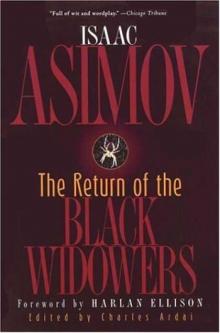 The Return of the Black Widowers
The Return of the Black Widowers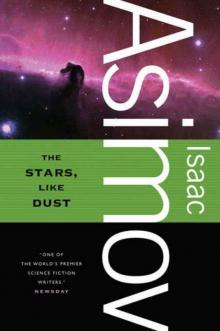 The Stars, Like Dust
The Stars, Like Dust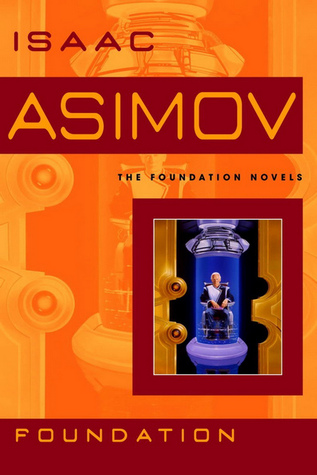 Foundation
Foundation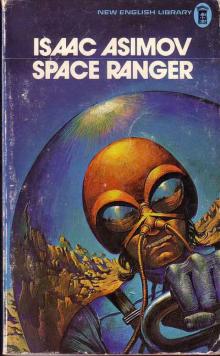 David Starr Space Ranger
David Starr Space Ranger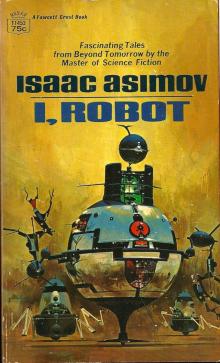 I, Robot
I, Robot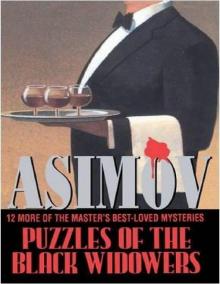 Puzzles of the Black Widowers
Puzzles of the Black Widowers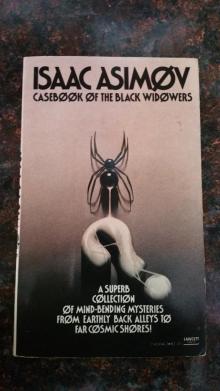 Casebook of the Black Widowers
Casebook of the Black Widowers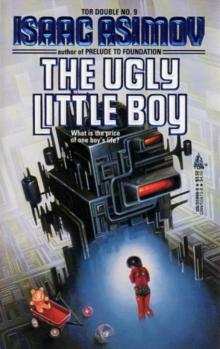 The Ugly Little Boy
The Ugly Little Boy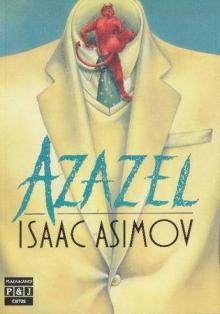 Azazel
Azazel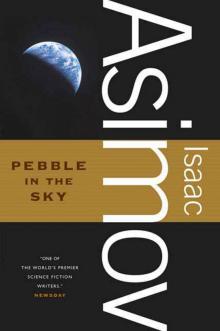 Pebble in the Sky
Pebble in the Sky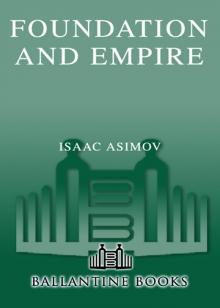 Foundation and Empire
Foundation and Empire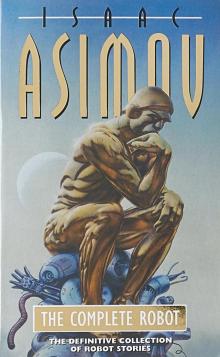 The Complete Robot
The Complete Robot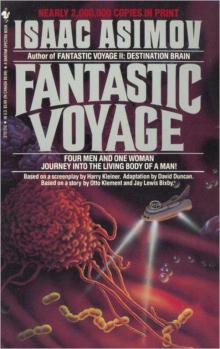 Fantastic Voyage
Fantastic Voyage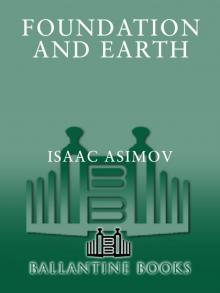 Foundation and Earth
Foundation and Earth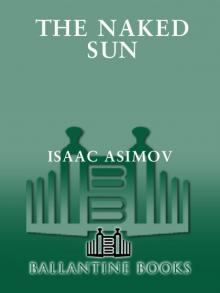 The Naked Sun
The Naked Sun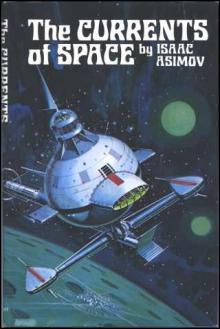 The Currents of Space
The Currents of Space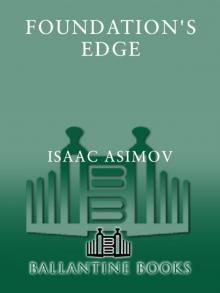 Foundation's Edge
Foundation's Edge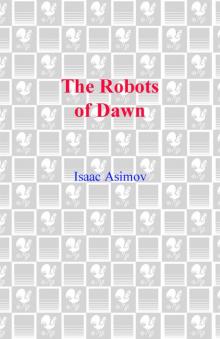 The Robots of Dawn
The Robots of Dawn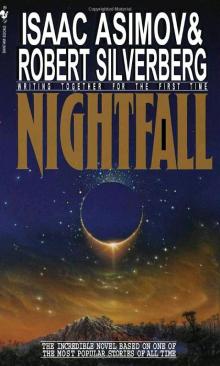 Nightfall
Nightfall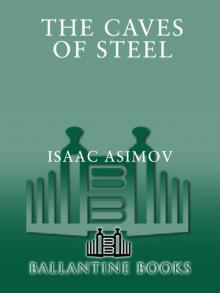 The Caves of Steel
The Caves of Steel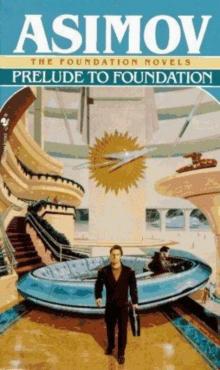 Prelude to Foundation
Prelude to Foundation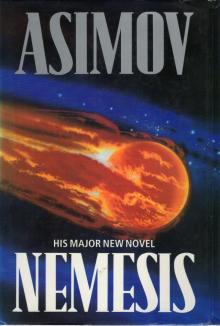 Nemesis
Nemesis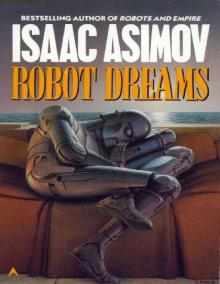 Robot Dreams
Robot Dreams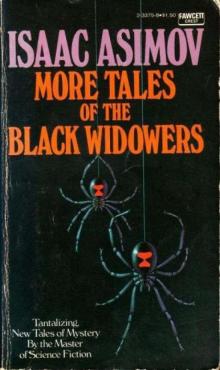 More Tales of the Black Widowers
More Tales of the Black Widowers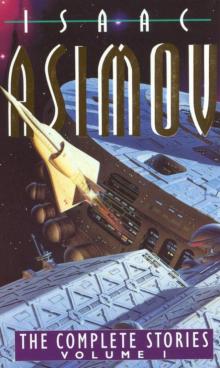 The Complete Stories
The Complete Stories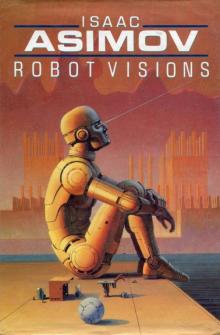 Robot Visions
Robot Visions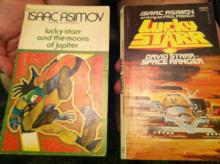 Lucky Starr And The Moons of Jupiter
Lucky Starr And The Moons of Jupiter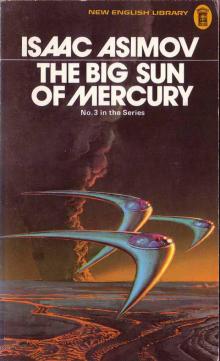 Lucky Starr and the Big Sun of Mercury
Lucky Starr and the Big Sun of Mercury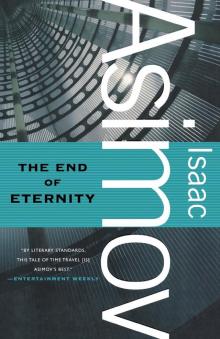 The End of Eternity
The End of Eternity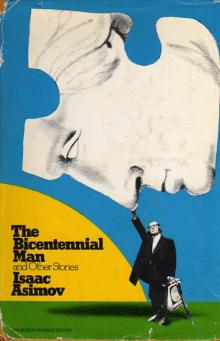 The Bicentennial Man and Other Stories
The Bicentennial Man and Other Stories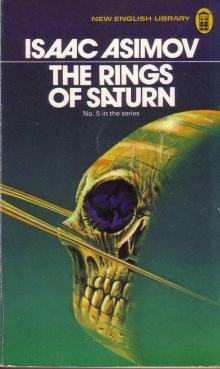 Lucky Starr And The Rings Of Saturn
Lucky Starr And The Rings Of Saturn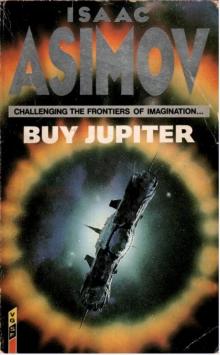 Buy Jupiter and Other Stories
Buy Jupiter and Other Stories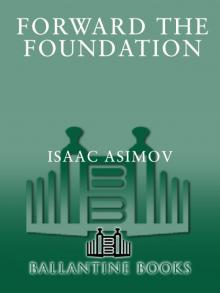 Forward the Foundation
Forward the Foundation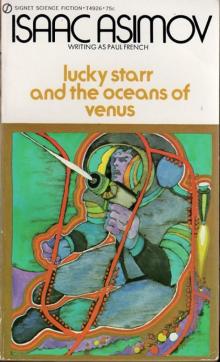 Lucky Starr and the Oceans of Venus
Lucky Starr and the Oceans of Venus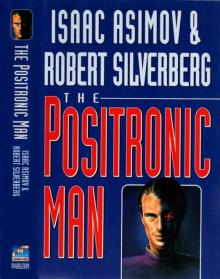 The Positronic Man
The Positronic Man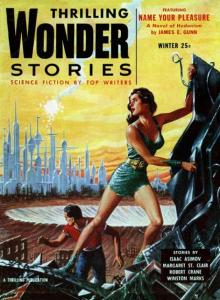 The Portable Star
The Portable Star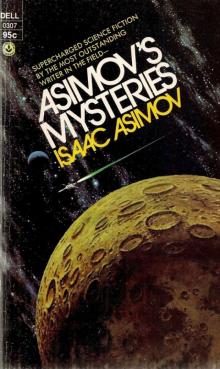 Asimovs Mysteries
Asimovs Mysteries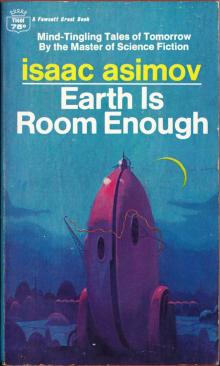 Earth Is Room Enough
Earth Is Room Enough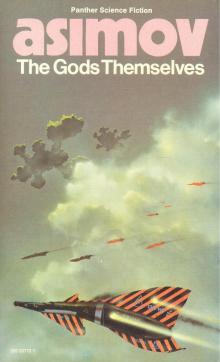 The Gods Themselves
The Gods Themselves Youth
Youth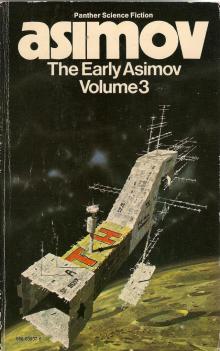 The Early Asimov Volume 3
The Early Asimov Volume 3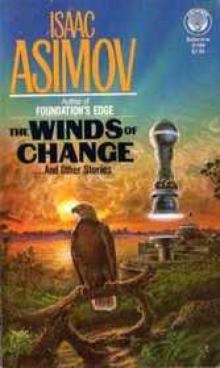 The Winds of Change and Other Stories
The Winds of Change and Other Stories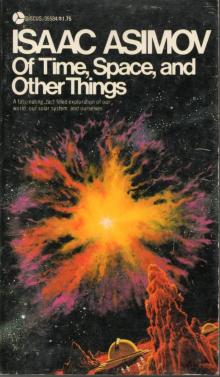 Of Time, Space, and Other Things
Of Time, Space, and Other Things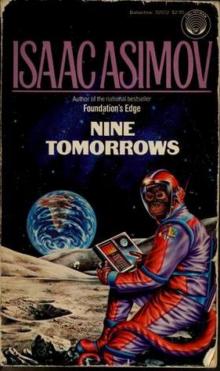 Nine Tomorrows
Nine Tomorrows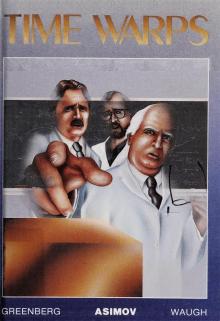 Time Warps
Time Warps Robots and Empire
Robots and Empire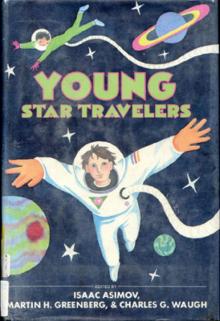 Young Star Travelers
Young Star Travelers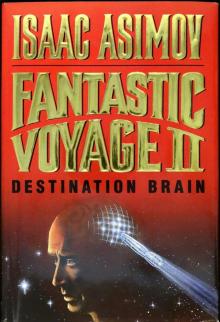 Fantastic Voyage II: Destination Brain
Fantastic Voyage II: Destination Brain Second Foundation
Second Foundation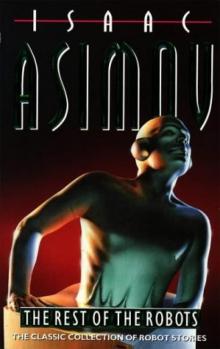 The Rest of the Robots
The Rest of the Robots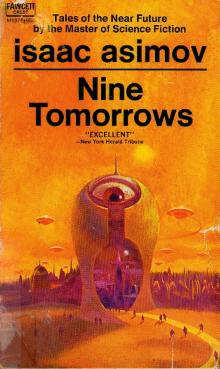 NINE TOMORROWS Tales of the Near Future
NINE TOMORROWS Tales of the Near Future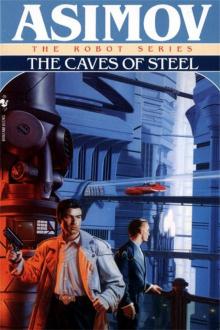 Daneel Olivaw 1 - The Caves of Steel
Daneel Olivaw 1 - The Caves of Steel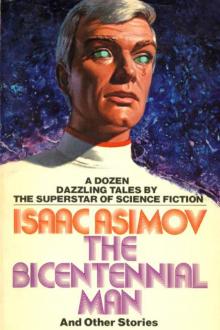 THE BICENTENNIAL MAN
THE BICENTENNIAL MAN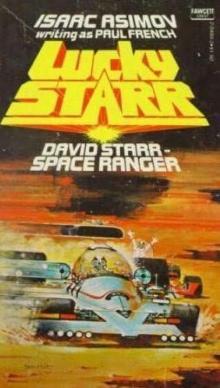 David Starr Space Ranger (lucky starr)
David Starr Space Ranger (lucky starr)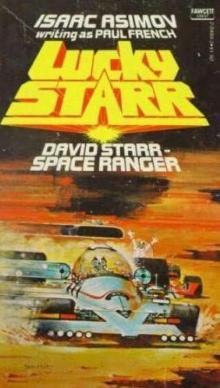 David Starr Space Ranger (ls)
David Starr Space Ranger (ls)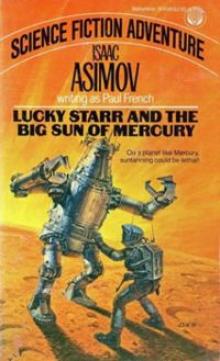 Lucky Starr And The Big Sun Of Mercury ls-4
Lucky Starr And The Big Sun Of Mercury ls-4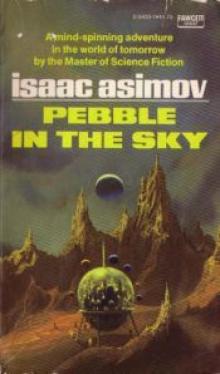 Pebble In The Sky te-1
Pebble In The Sky te-1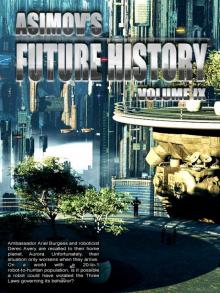 Asimov’s Future History Volume 9
Asimov’s Future History Volume 9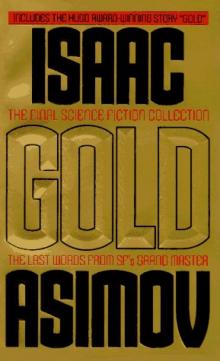 Gold: The Final Science Fiction Collection
Gold: The Final Science Fiction Collection Foundation and Earth f-7
Foundation and Earth f-7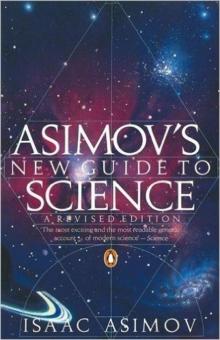 Asimov's New Guide to Science
Asimov's New Guide to Science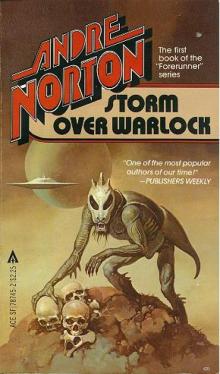 STORM OVER WARLOCK
STORM OVER WARLOCK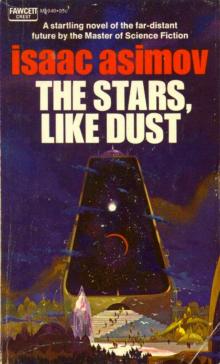 Stars, Like Dust
Stars, Like Dust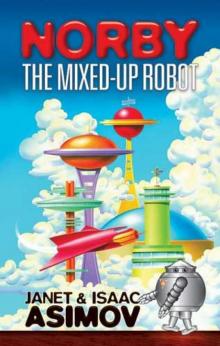 Norby The Mixed-Up Robot
Norby The Mixed-Up Robot Found!
Found!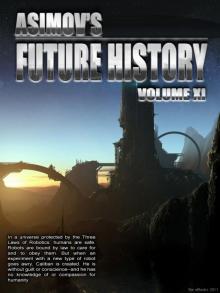 Asimov’s Future History Volume 11
Asimov’s Future History Volume 11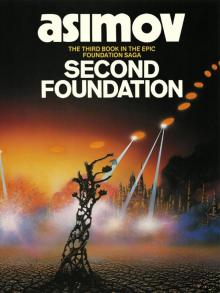 Second Foundation f-5
Second Foundation f-5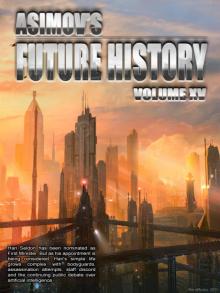 Asimov’s Future History Volume 15
Asimov’s Future History Volume 15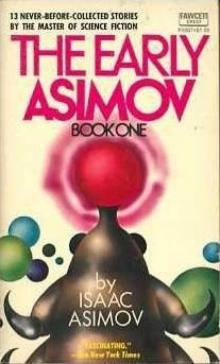 The Early Asimov. Volume 1
The Early Asimov. Volume 1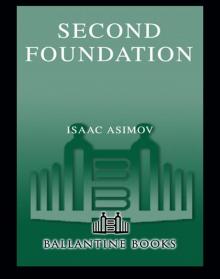 Secound Foundation
Secound Foundation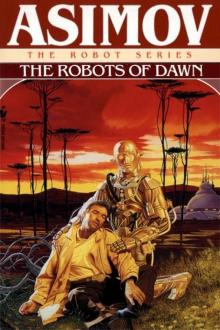 Daneel Olivaw 3 - The Robots of Dawn
Daneel Olivaw 3 - The Robots of Dawn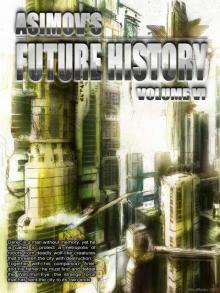 Asimov’s Future History Volume 6
Asimov’s Future History Volume 6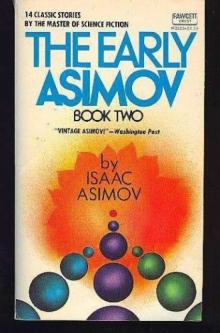 The Early Asimov. Volume 2
The Early Asimov. Volume 2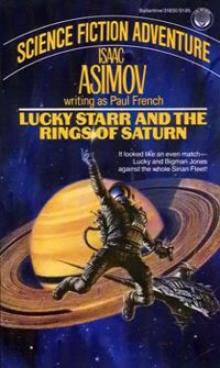 Lucky Starr And The Rings Of Saturn ls-6
Lucky Starr And The Rings Of Saturn ls-6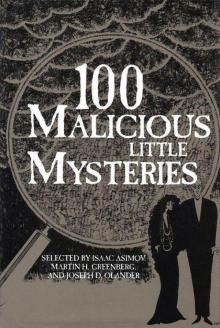 100 Malicious Little Mysteries
100 Malicious Little Mysteries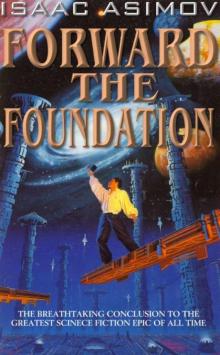 Forward the Foundation f-2
Forward the Foundation f-2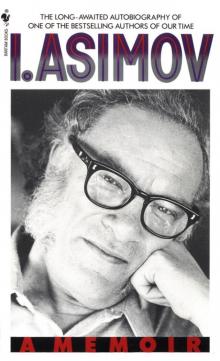 I.Asimov: A Memoir
I.Asimov: A Memoir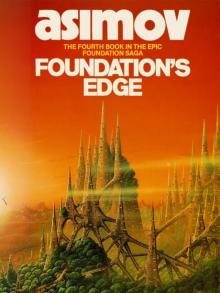 Foundation's Edge f-6
Foundation's Edge f-6 Lucky Starr and the Pirates of the Asteroids ls-2
Lucky Starr and the Pirates of the Asteroids ls-2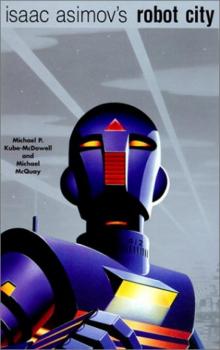 Robot City 1 & 2
Robot City 1 & 2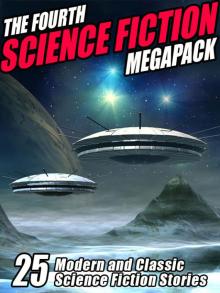 The Fourth Science Fiction Megapack
The Fourth Science Fiction Megapack Asimov’s Future History Volume 16
Asimov’s Future History Volume 16 The Dim Rumble
The Dim Rumble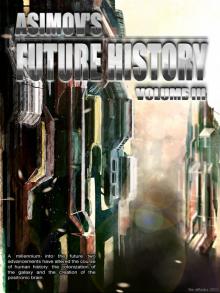 Asimov's Future History Volume 3
Asimov's Future History Volume 3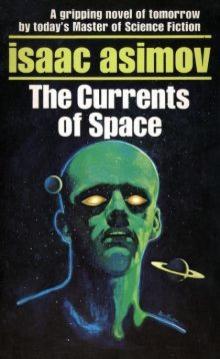 The Currents Of Space te-3
The Currents Of Space te-3 Asimov’s Guide To Shakespear. Volume 1
Asimov’s Guide To Shakespear. Volume 1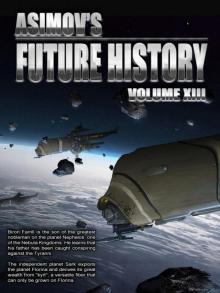 Asimov’s Future History Volume 13
Asimov’s Future History Volume 13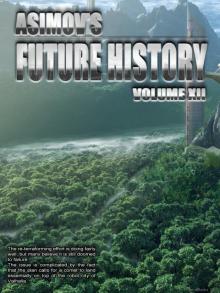 Asimov’s Future History Volume 12
Asimov’s Future History Volume 12 The Secret Sense
The Secret Sense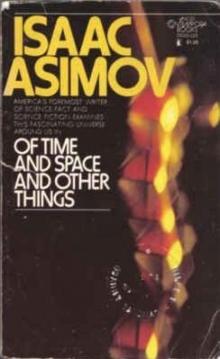 Of Time and Space and Other Things
Of Time and Space and Other Things Norby tnc-2
Norby tnc-2 Norby The Mixed-Up Robot tnc-1
Norby The Mixed-Up Robot tnc-1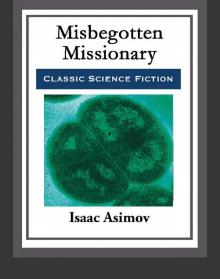 Misbegotten Missionary
Misbegotten Missionary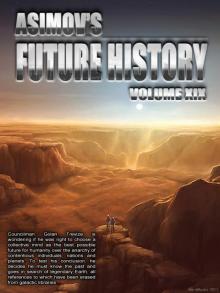 Asimov’s Future History Volume 19
Asimov’s Future History Volume 19 Fantastic Voyage II: Destination Brain fv-2
Fantastic Voyage II: Destination Brain fv-2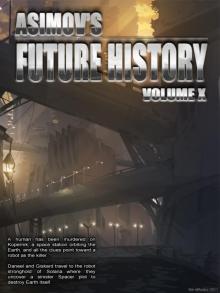 Asimov’s Future History Volume 10
Asimov’s Future History Volume 10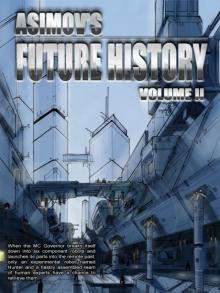 Asimov's Future History Volume 2
Asimov's Future History Volume 2 Feeling of Power
Feeling of Power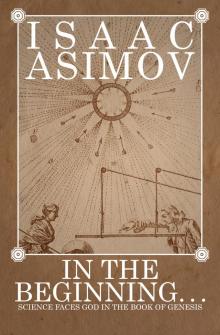 In the Beginning
In the Beginning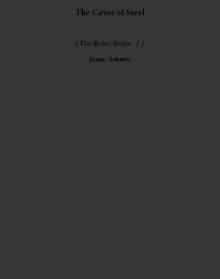 The Caves of Steel trs-1
The Caves of Steel trs-1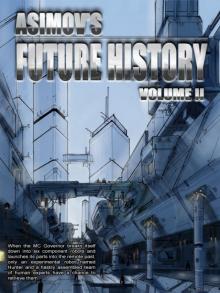 Asimov's Future History Vol 2
Asimov's Future History Vol 2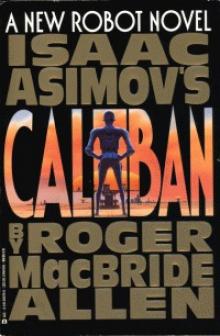 Caliban c-1
Caliban c-1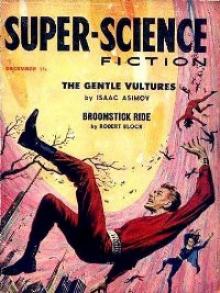 The Gentle Vultures
The Gentle Vultures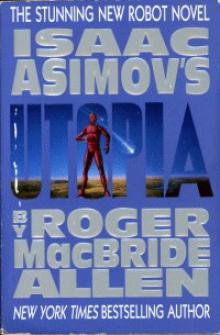 Utopia c-3
Utopia c-3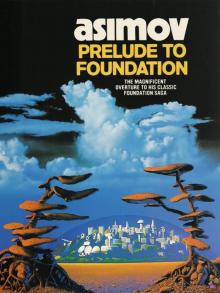 Prelude to Foundation f-1
Prelude to Foundation f-1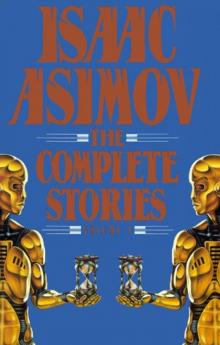 Short Stories Vol.1
Short Stories Vol.1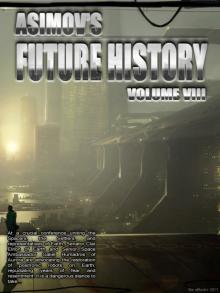 Asimov’s Future History Volume 8
Asimov’s Future History Volume 8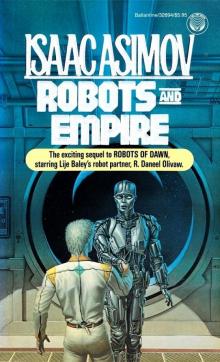 Daneel Olivaw 4 - Robots and Empire
Daneel Olivaw 4 - Robots and Empire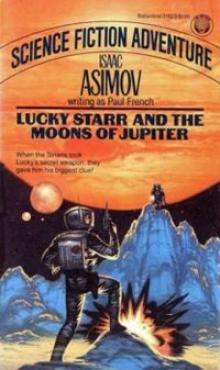 Lucky Starr The And The Moons of Jupiter ls-5
Lucky Starr The And The Moons of Jupiter ls-5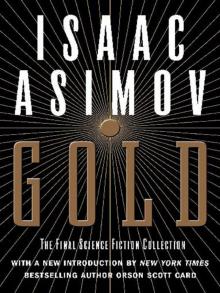 Gold
Gold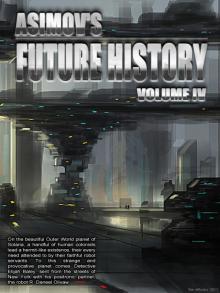 Asimov’s Future History Volume 4
Asimov’s Future History Volume 4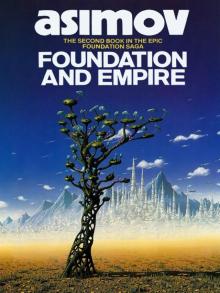 Foundation and Empire f-4
Foundation and Empire f-4 Potential
Potential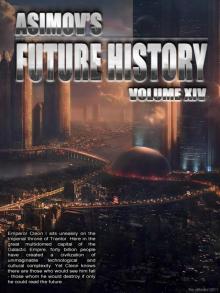 Asimov’s Future History Volume 14
Asimov’s Future History Volume 14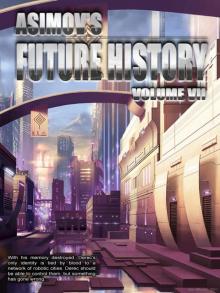 Asimov’s Future History Volume 7
Asimov’s Future History Volume 7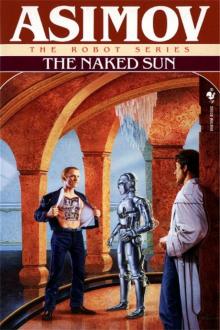 Daneel Olivaw 2 - The Naked Sun
Daneel Olivaw 2 - The Naked Sun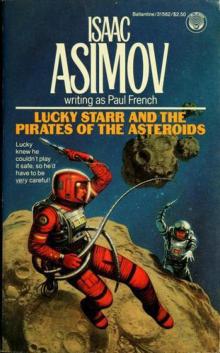 Lucky Starr and the Pirates of the Asteroids
Lucky Starr and the Pirates of the Asteroids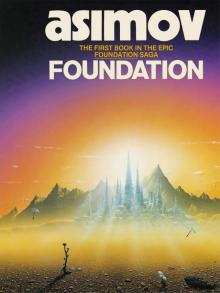 Foundation f-3
Foundation f-3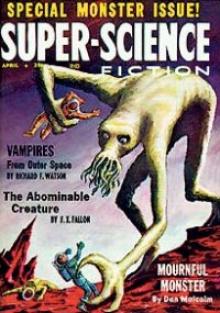 All the Troubles of the World
All the Troubles of the World Cleon the Emperor
Cleon the Emperor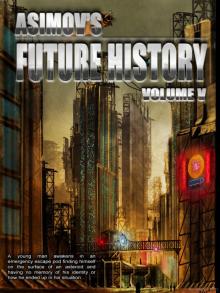 Asimov's Future History Volume 5
Asimov's Future History Volume 5 Asimov’s Future History Volume 20
Asimov’s Future History Volume 20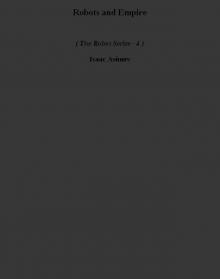 Robots and Empire trs-4
Robots and Empire trs-4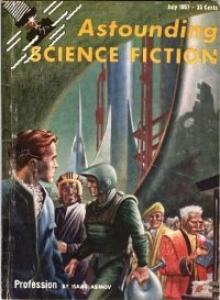 Profession
Profession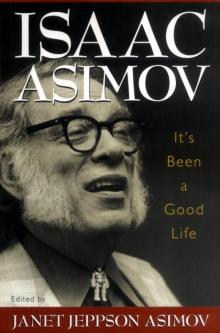 It's Been a Good Life
It's Been a Good Life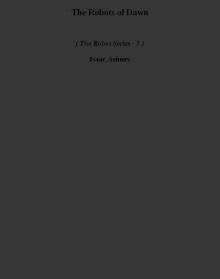 The Robots of Dawn trs-3
The Robots of Dawn trs-3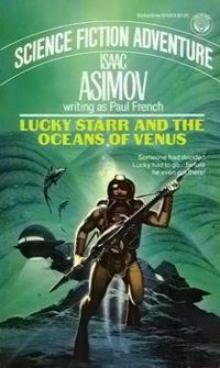 Lucky Starr And The Oceanf Of Venus ls-3
Lucky Starr And The Oceanf Of Venus ls-3 The Naked Sun trs-2
The Naked Sun trs-2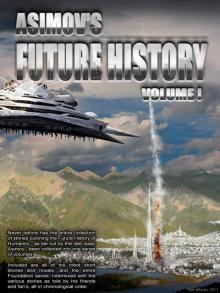 Asimov's Future History Volume 1
Asimov's Future History Volume 1